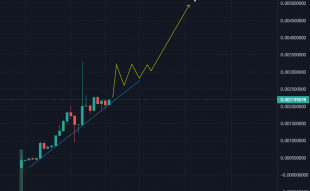Join Our Telegram channel to stay up to date on breaking news coverage
The crypto sector continues to attract bad actors due to its anonymous nature. Governments have been working hard to develop regulations that will curb the use of cryptocurrencies for money laundering and terrorism financing.
However, these regulations seem to be doing very little to tame the use of crypto for criminal activities. A recent Chainalysis report noted that in 2021, $8.6B was laundered through crypto.
Growing use of crypto for money laundering
The amount laundered through crypto in 2021 was 30% higher than the amount in 2020. However, this has partially been attributed to the growth of the crypto sector over the past year.
In 2020, illegal proceeds laundered through crypto-assets stood at $6.6 billion. The current figure at $8.6B is a significant increase. The Chainalysis report noted that cybercriminals were increasingly using crypto to launder money “to a service where they can be kept safe from the authorities and eventually converted to cash.”
Out of the 8.6B laundered through crypto, 17% was done through decentralized finance (DeFi) protocols. This has increased from the 2% recorded in 2020. Other avenues being used for laundering include mining pools and exchanges.
The report noted that the amount could be much higher, as the $8.6B only accounted for online crimes such as ransomware attacks and sales on the darknet. The company noted that it was “more difficult” to calculate the proceeds from crimes such as drug trafficking and how much of this is converted into crypto.
Crypto theft increases
Over the past year, scams and theft in the crypto sector remained relatively high. Wallet addresses that received stolen funds sent almost 50% of their proceeds to DeFi applications. This could be attributed to the increased number of scams and hacks in the DeFi space.
The majority of stolen funds were sent to centralized exchange platforms. Cybercriminals also sent the largest portion of their ill-gotten funds to centralized exchanges. However, this is surprising, given that centralized exchanges face tough compliance requirements such as the travel rule, necessitating the verification of wallet addresses and reporting requirements on transactions exceeding $1000.
Your capital is at risk.
Read more:
Join Our Telegram channel to stay up to date on breaking news coverage



